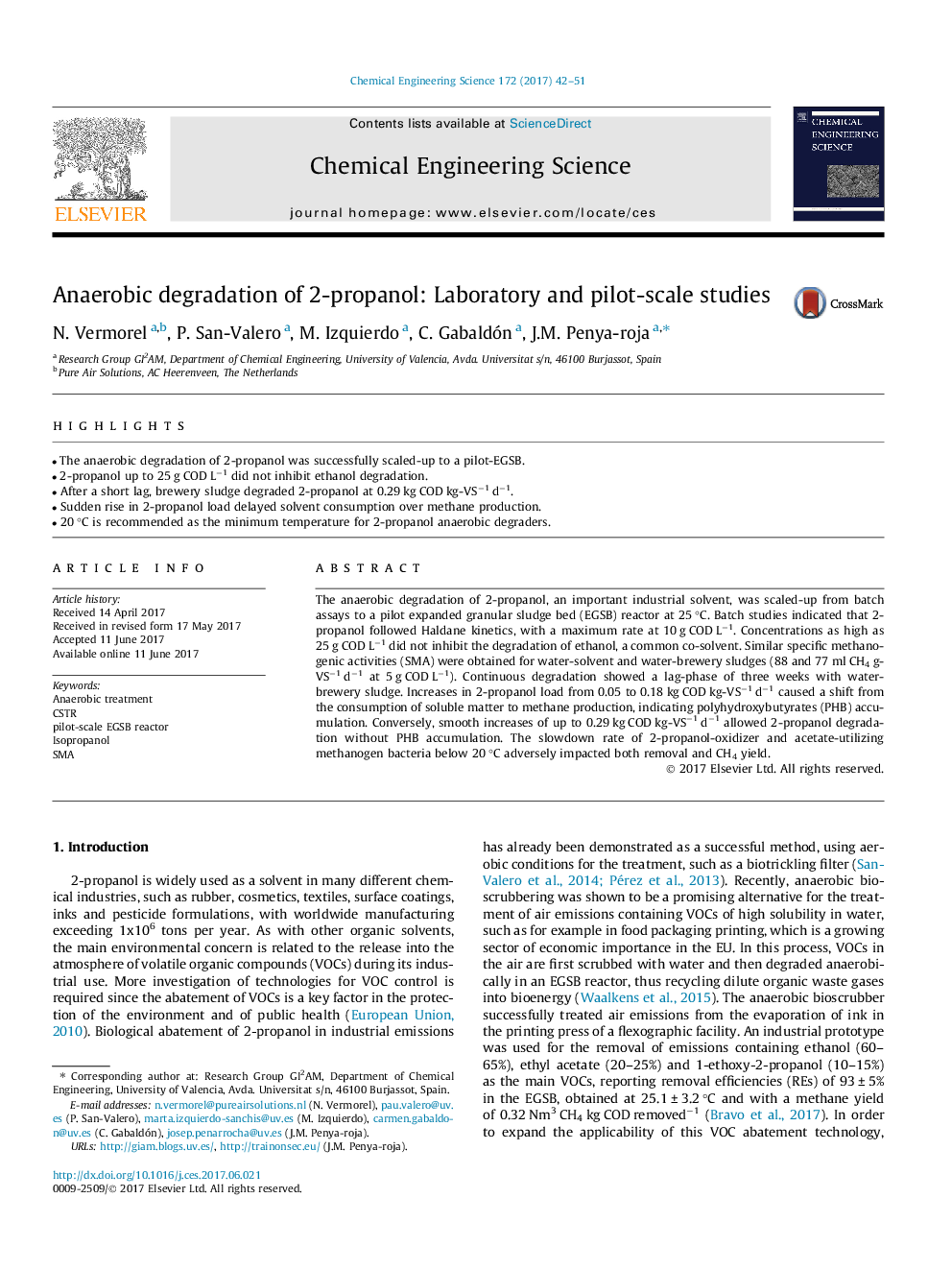| Article ID | Journal | Published Year | Pages | File Type |
|---|---|---|---|---|
| 6466936 | Chemical Engineering Science | 2017 | 10 Pages |
â¢The anaerobic degradation of 2-propanol was successfully scaled-up to a pilot-EGSB.â¢2-propanol up to 25 g COD Lâ1 did not inhibit ethanol degradation.â¢After a short lag, brewery sludge degraded 2-propanol at 0.29 kg COD kg-VSâ1 dâ1.â¢Sudden rise in 2-propanol load delayed solvent consumption over methane production.â¢20 °C is recommended as the minimum temperature for 2-propanol anaerobic degraders.
The anaerobic degradation of 2-propanol, an important industrial solvent, was scaled-up from batch assays to a pilot expanded granular sludge bed (EGSB) reactor at 25 °C. Batch studies indicated that 2-propanol followed Haldane kinetics, with a maximum rate at 10 g COD Lâ1. Concentrations as high as 25 g COD Lâ1 did not inhibit the degradation of ethanol, a common co-solvent. Similar specific methanogenic activities (SMA) were obtained for water-solvent and water-brewery sludges (88 and 77 ml CH4 g-VSâ1 dâ1 at 5 g COD Lâ1). Continuous degradation showed a lag-phase of three weeks with water-brewery sludge. Increases in 2-propanol load from 0.05 to 0.18 kg COD kg-VSâ1 dâ1 caused a shift from the consumption of soluble matter to methane production, indicating polyhydroxybutyrates (PHB) accumulation. Conversely, smooth increases of up to 0.29 kg COD kg-VSâ1 dâ1 allowed 2-propanol degradation without PHB accumulation. The slowdown rate of 2-propanol-oxidizer and acetate-utilizing methanogen bacteria below 20 °C adversely impacted both removal and CH4 yield.
